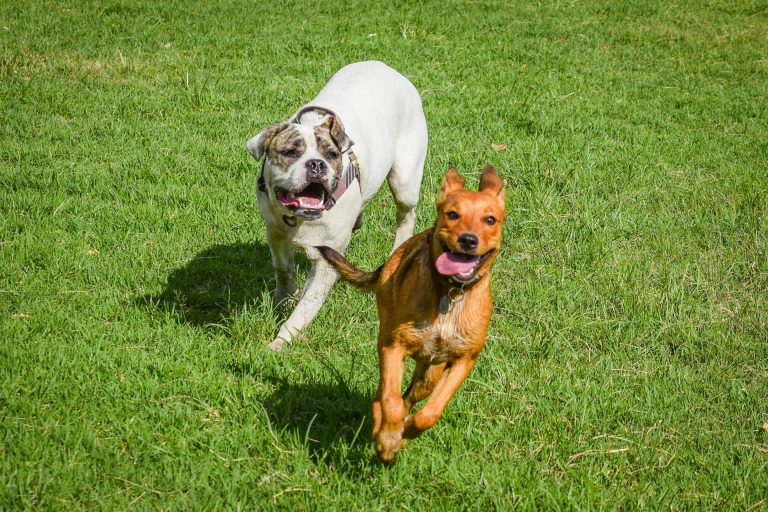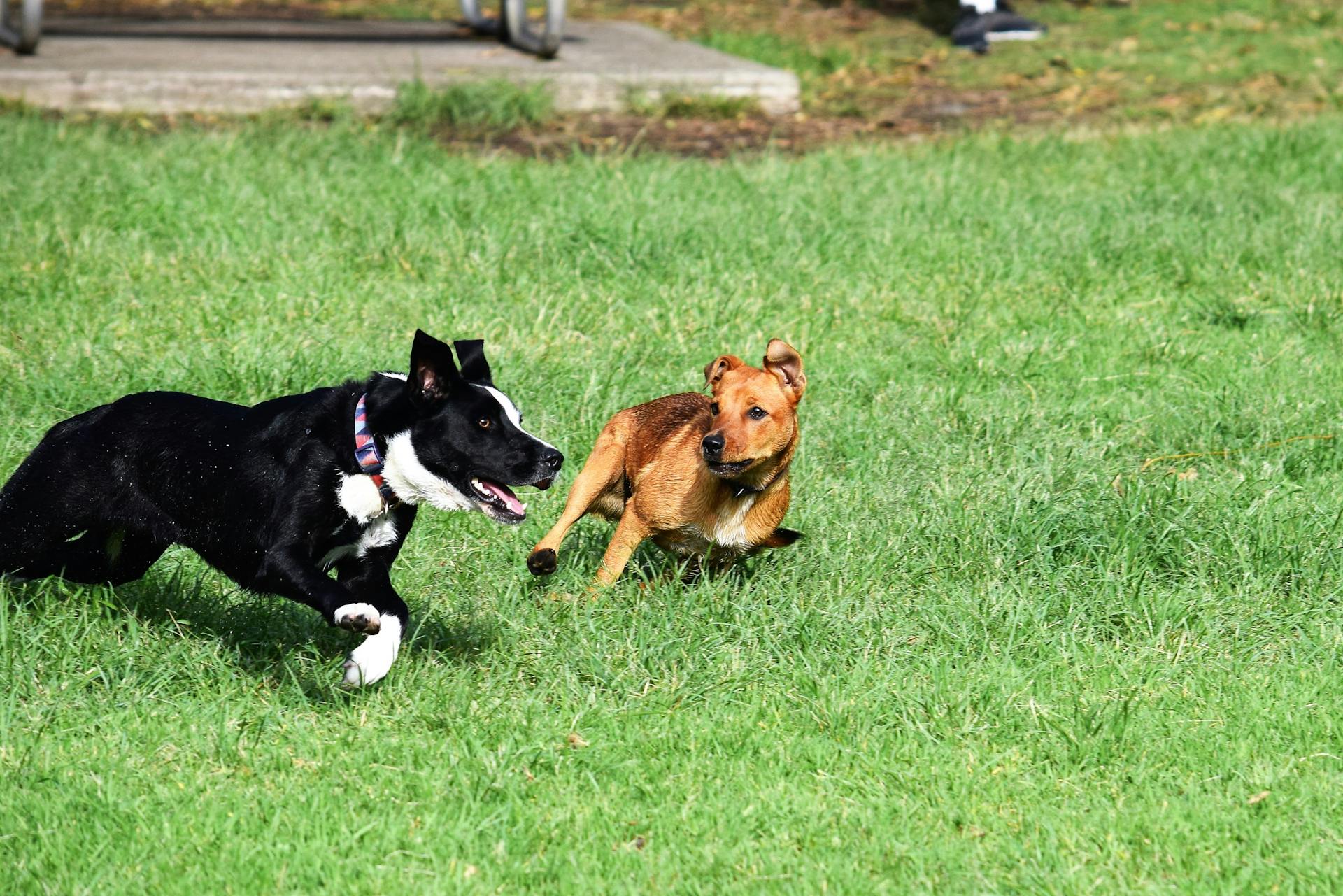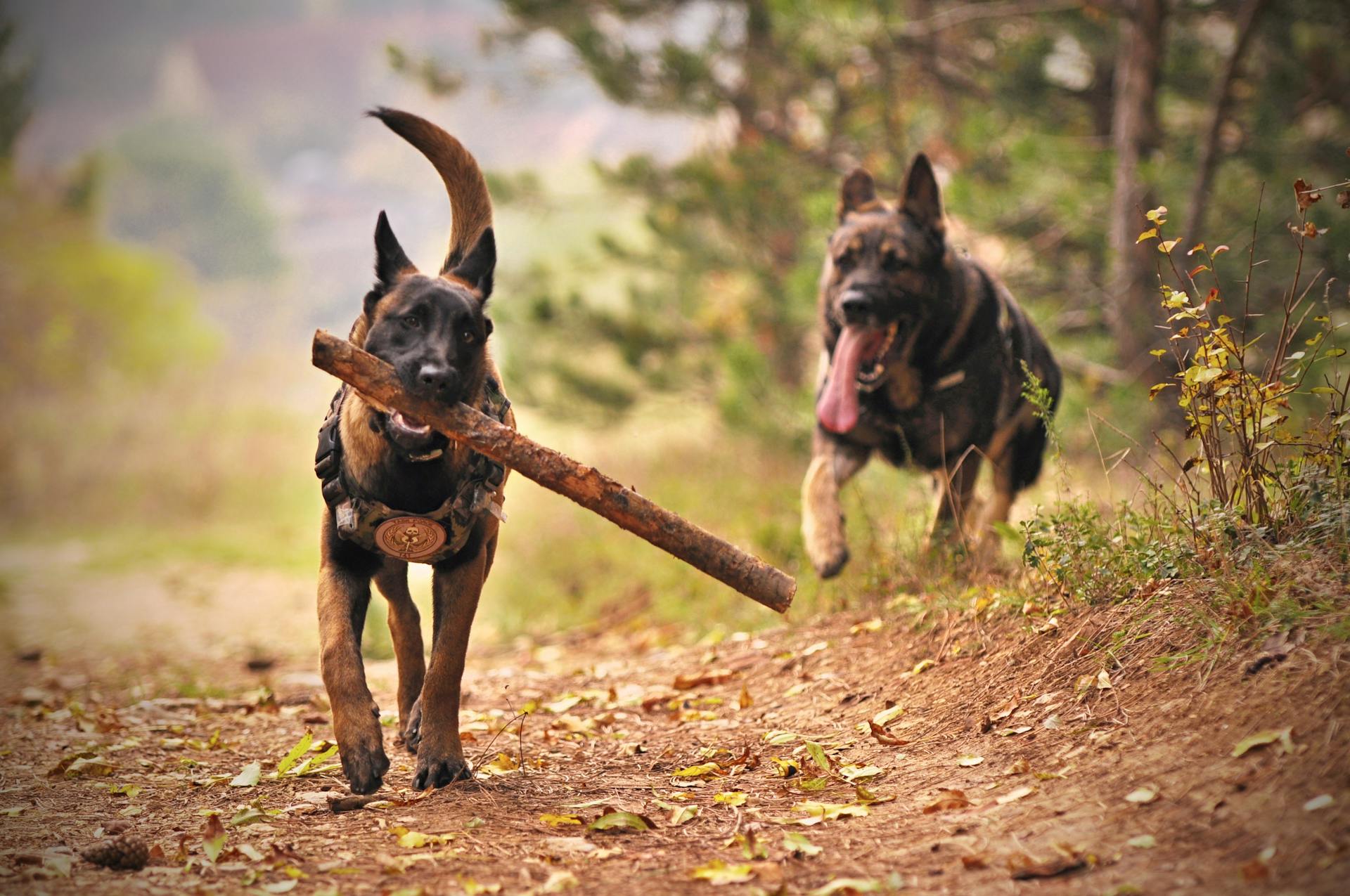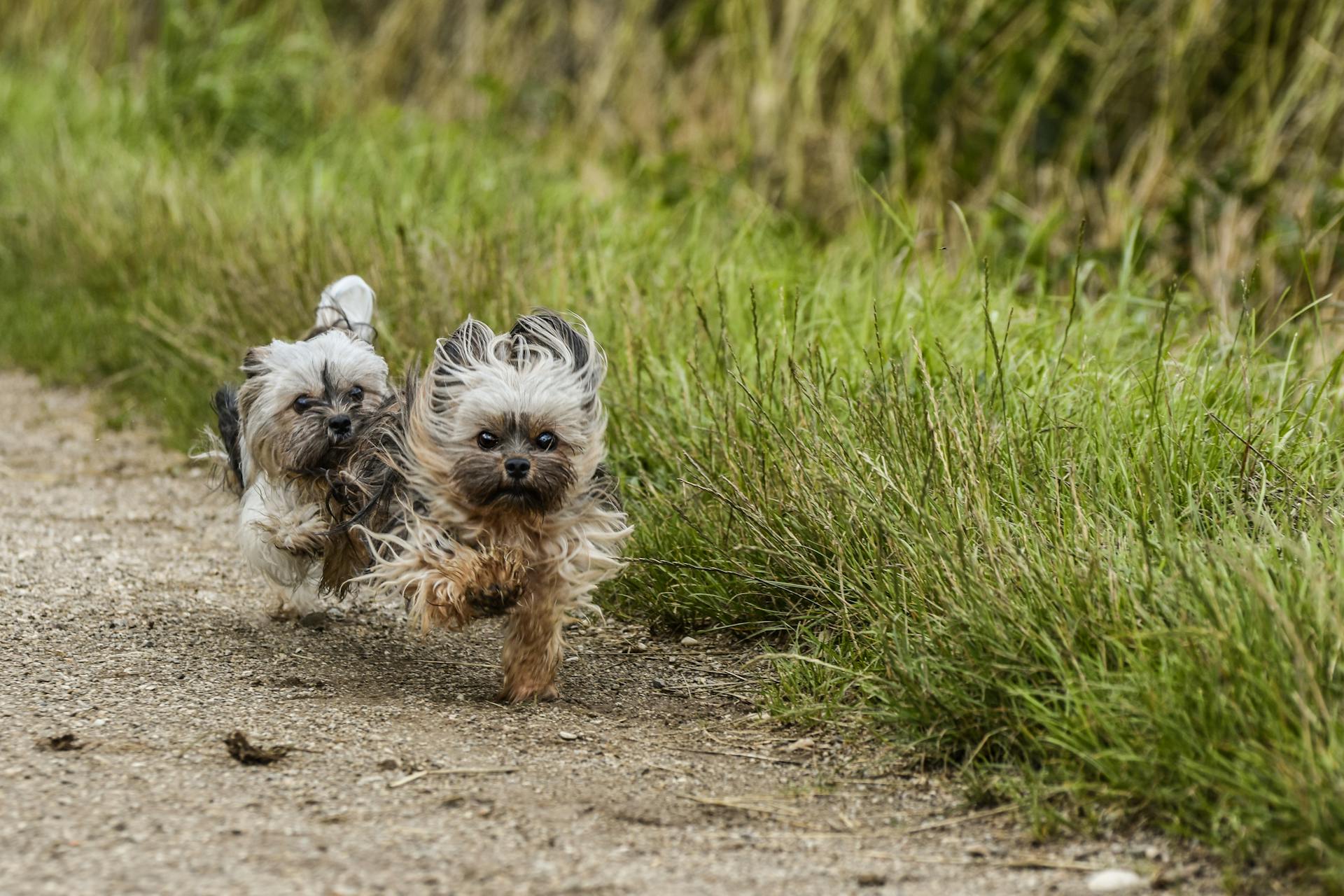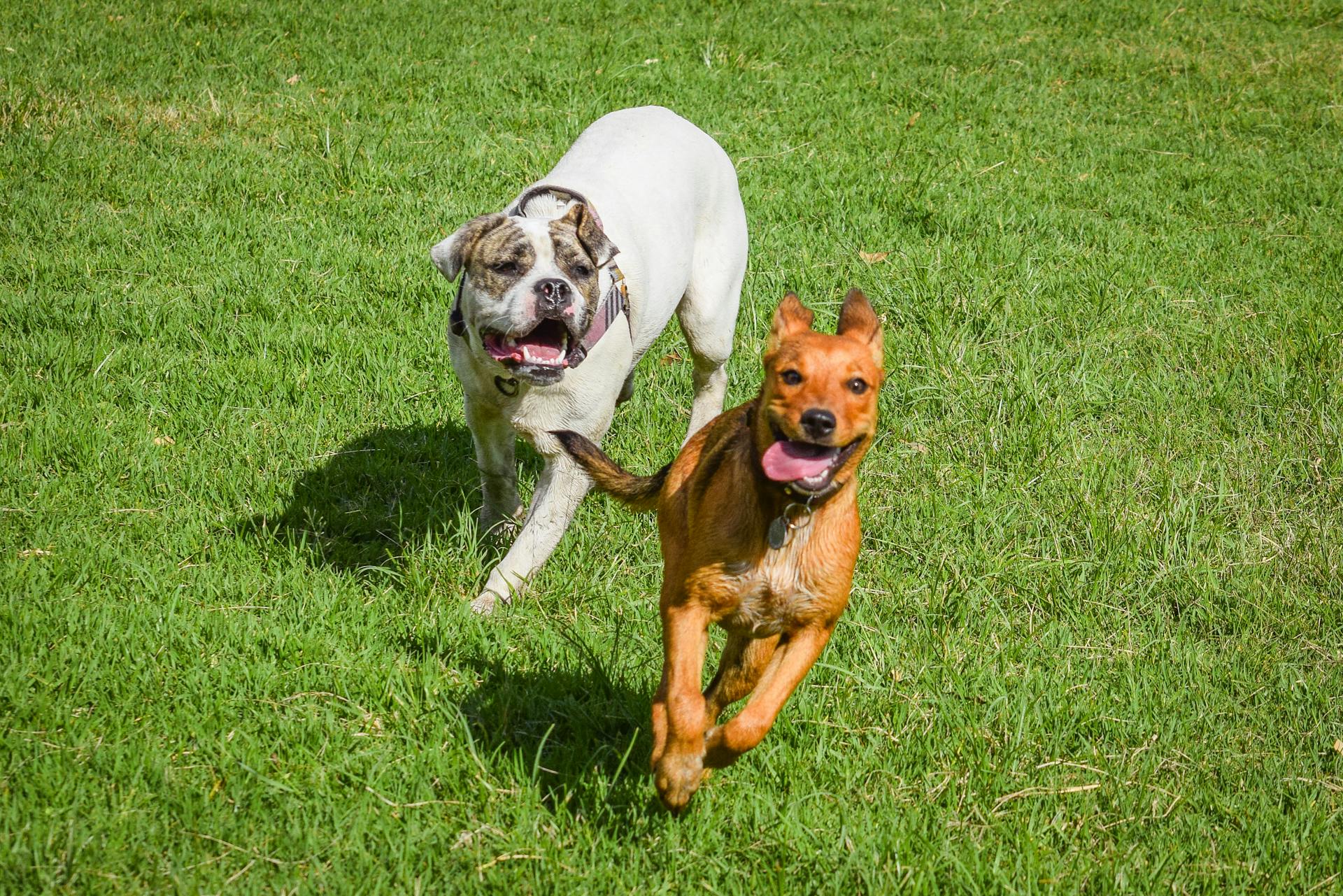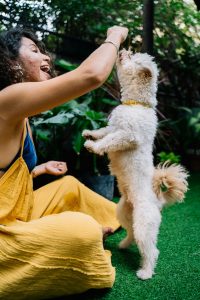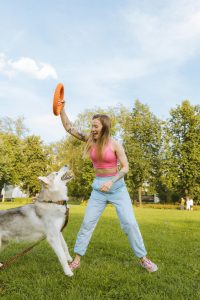Chasing can be fun, but not always. In some dogs, their chase instinct is so strong, they can go after other canines. Yes, I understand that chasing is a game a lot of dogs love. But not all dogs enjoy it. And sometimes, chasing can result in unwanted incidents.
Does your dog turn into a bolt of lightning when he sees another puppy? For some dog breeds, the chase instinct is natural. I know plenty of canines with a strong prey drive. Yet, it is important to keep your dog and others safe.
Why Chasing Can Be Bad?
I’ve seen this happen too many times to ignore it. Some dogs love chasing, others do not. And then in a dog park, you have calm dogs. At one point, a dog that loves to be chased enters the scene, and things escalate. Some dogs begin to chase. And others, that do not love it, might react to the chasing dogs.
What is even worse is that some pet parents come to the dog park with a puppy with zoomies. Now that is a whole new level of dangerous and wrong.
My Bad Experience
When Milo was a young puppy, we still didn’t master the recall game. As a hunting dog, my Jack Russell would go after things that moved. Once, he began chasing a cat that ran across two small streets. Luckily, there were no cars.
But, lesson learned. I stopped letting him off-leash until we mastered recall and he learned it is not OK to chase things outside.
So, we worked on his recall and his impulse control. Nowadays, I can say that Milo can still run after things now and then. But he is much better at stopping and coming back.
How to Make Sure Chasing is Fun?
As I said before, chasing can be loads of fun for dogs. But if one of the dogs is not properly trained, that fun exercise can escalate quickly into something else. We have a saying in my country, “Playing turns to crying”.
So, how do you turn the dog chase instinct into something fun and playful? Here are three concepts you have to remember:
- Master the recall – Without a strong recall game and command, your dog is a liability outside. Begin in a safe, distraction-free area, and then gradually increase the difficulty. Once you have a good recall, you can try playing chase games in enclosed and free-range environments
- Help your dog understand the leash – Always keep your dog on a leash during walks in areas with other dogs. You cannot be responsible for all the dogs, right? But you can be responsible for your dog. Even the best “come” is not 100% reliable. Have some control over your dog and allow for safe introduction with other puppies
- Gradual greetings – When you want to socialize your puppy, do it gradually. Find a friend with a calm and friendly dog. Join some forums. Find neighbors with calm dogs. Introduce puppies on neutral ground. Start with leashed dogs at a distance, and then gradually decrease distance and leash tension. Neutral walking is best for introducing dogs
The Importance of Recall
The concept of recall is quite simple. You call your dog, and your pet comes back to you. It is a simple, yet, complex command. And I must say, it is one many pet parents struggle with.
Why? Well, because often, dog owners teach this command in the wrong way. Here is an example. You have a dog that is running away from you. And you start to panic. You yell and call your dog. The puppy comes, and you yell and punish him for running away. See what you have done there?
Instead of reinforcing “coming back to you”, you are planting anxiety and panic in your puppy.
What to do instead? Well, there are several ways to teach recall. From slow recall games to some games with treats and positive reinforcement, and everything in between. I’ve written many articles on recall. You can read here, here, here, and here!
And if you do not want to read all those articles, here is a quick summary. This is the simplest, most basic way to teach recall.
With that in mind, here is how to do some dog training on a leash for recall.
- Have your puppy on a leash and make one or two steps away from it
- Wait for your puppy to come, and reward it with verbal praise and treat
- In the beginning, your dog will probably come without even giving a verbal command
- If your puppy doesn’t come, call it by his name
- Give a treat, move away a few steps, and repeat the exercise again
- Always start practicing in a familiar environment with no distractions and allow your puppy to wander. Then call your dog
- If your dog attempts to move toward you, start praising and encouraging it to move toward you
- You can walk backward to keep your dog moving toward you
Leash Management
As I said before, even if you have a well-mannered dog, I suggest walking on a leash in crowded areas. Why? Because dogs can easily go and run after a small animal or any other prey. Dogs prey drive is strong in hound puppies and hunting dogs.
I know Milo can sometimes run after a squirrel when we walk in the woods. Now, when you are in an area where there are no cars, children running, and things like that, let your dog free. Just make sure your recall command is on point.
Putting your dog on a leash in urban areas also allows for safer introductions. More on that below.
The Art of Dog Introductions
Now let’s talk about how you should introduce puppies to one another. A huge mistake pet parents make is they walk their dogs toward one another. And that is plain wrong. Why? Because when dogs stare at each other before introduction, it creates tension and can lead to aggression.
Instead, introduce your puppy to another dog from the side. It is a neutral position and a way for a calm and friendly initial introduction.
The best way to introduce dogs is on neutral ground. Start by walking two dogs side by side. This will improve neutrality and reduce tension. Slowly decrease the distance between the dogs as they are showing calm interest.
Final Words
Whatever you are trying to teach your dog, consistency is the key. I’ve seen plenty of pet parents that quit after a few mistakes. Don’t be like that. Fall, get back up, and continue.
When you are training your puppy, always end on a positive note. It will make your dog feel happy and want to train again and again.
If your goal is to prevent dogs from chasing other dogs for no reason, there are two things you need to train. The first one is reliable recall, and the second is impulse control. Both require plenty of effort and consistency.

